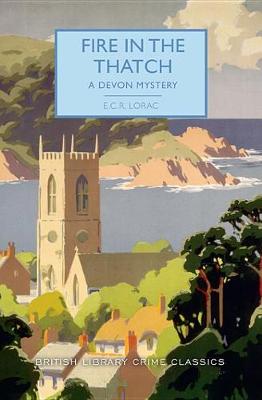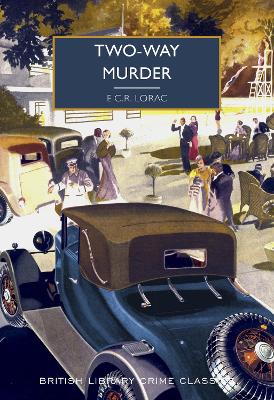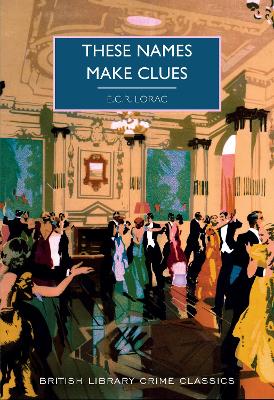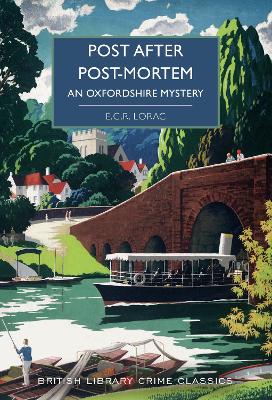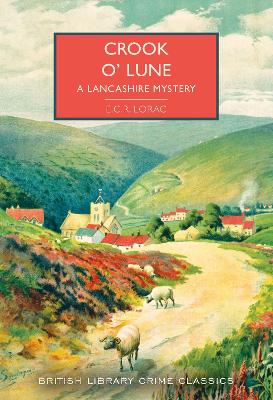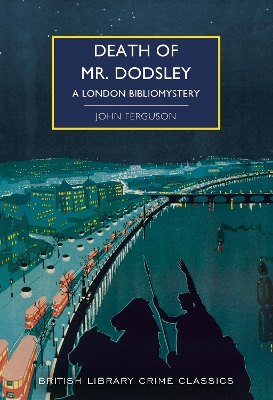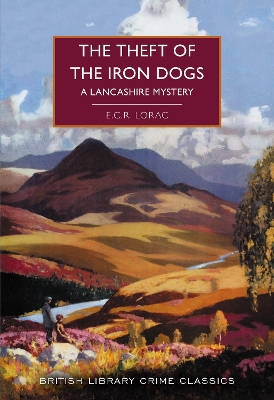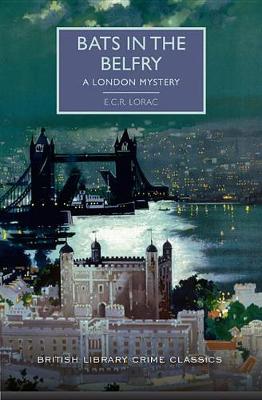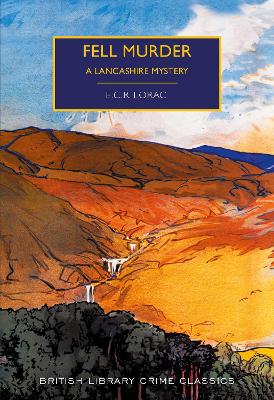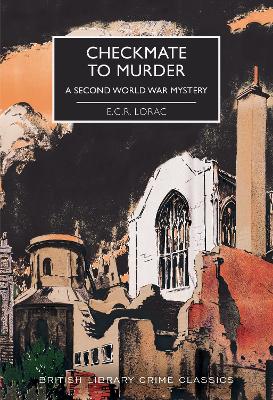British Library Crime Classics
8 primary works • 13 total works
Book 52
On a nearby farm lives the bored, flirtatious June St Cyres, an exile from London while her husband is a Japanese POW. June's presence attracts fashionable visitors of dubious character, and threatens to spoil Vaughan's Prized seclusion.
When Little Thatch is destroyed in a blaze, all Vaughan's work goes up in smoke - and Inspector Macdonald is drafted in to uncover a motive for murder.
Book 89
It happened on a dark and misty night; the night of the ball at The Prince’s Hall, Fordings. Abuzz with rumours surrounding the disappearance of Rosemary Reeve on the eve of last year’s ball, the date proves ill-fated again when two homebound partygoers, Nick and Dilys, come to a swerving halt before a corpse on the road.
Arriving at the scene to the news that Nick has been attacked after telephoning for the police, Inspector Turner suspects there may be more to the case than deadly accident. It’s not long before Waring of the local C.I.D. is drawn into the investigation, faced with the task of unravelling an increasingly tangled knot of misleading alibis and deep-rooted local grievances.
Written in the last years of the author’s life, this previously unpublished novel is a tribute to Lorac’s enduring skill for constructing an ingenious puzzle, replete with memorable characters and gripping detective work. This edition also includes an introduction by the CWA Diamond Dagger Award-winning author Martin Edwards.
Book 95
Chief Inspector Macdonald has been invited to a treasure hunt party at the house of Graham Coombe, the celebrated publisher of Murder by Mesmerism. Despite a handful of misgivings, the inspector joins a guestlist of novelists and thriller writers disguised on the night under literary pseudonyms. The fun comes to an abrupt end, however, when 'Samuel Pepys' is found dead in the telephone room in bizarre circumstances.
Amidst the confusion of too many fake names, clues, ciphers and convoluted alibis, Macdonald and his allies in the CID must unravel a truly tangled case in this metafictional masterpiece, which returns to print for the first time since its publication in 1937.
Book 99
Despite some suspicions from the family, the verdict at the inquest is suicide - but when Ruth's brother Richard receives a letter from the deceased which was delayed in the post, he enlists the help of CID Robert Macdonald to investigate what could only be an ingeniously planned murder.
Book 104
It all began up at High Gimmerdale with the sheep-stealing, a hateful act in the shepherding lands around the bend in the Lune river – the Crook o’ Lune. Then came the fire at Aikengill house and with the leaping of the flames, death, disorder and dangerous gossip came to the quiet moorlands.
Visiting his friends, the Hoggetts, while searching for some farmland to buy up ahead of his retirement, Chief Inspector Robert Macdonald’s trip becomes a busman’s holiday when he is drawn to investigate the deadly blaze and the deep-rooted motives behind the rising spate of crimes.
Renowned for its authentic characters and settings based partly on the author’s own experiences of life in the Lune valley, E.C.R. Lorac’s classic rural mystery returns to print for the first time since 1953.
Book 110
Vivian Lestrange - celebrated author of the popular mystery novel The Charterhouse Case and total recluse - has apparently dropped off the face of the Earth. Reported missing by his secretary Eleanor, whom Inspector Bond suspects to be the author herself, it appears that crime and murder is afoot when Lestrange's housekeeper is also found to have disappeared.
Bond and Warner of Scotland Yard set to work to investigate a murder with no body and a potentially fictional victim, as E C R Lorac spins a twisting tale full of wry humour and red herrings, poking some fun at her contemporary reviewers who long suspected the Lorac pseudonym to belong to a man (since a woman could apparently not have written mysteries the way that she did).
Incredibly rare today, this mystery returns to print for the first time since 1935.
Book 117
While hot on the heels of serial coupon-racketeer Gordon Ginner, Chief Inspector MacDonald of Scotland Yard receives word of a peculiar incident up in Lancashire - the fishing cottage of a local farmer has been broken into, with an assortment of seemingly random items missing which include a reel of salmon line, a large sack and two iron dogs (or andirons) from his fireplace. This incident becomes all the more enticing to MacDonald when a body washes up on the banks of the River Lune not far from the cottage in question; the body of Gordon Ginner.
First published in 1946 and set in the fell country of Lunesdale over the course of a rainy September, The Theft of the Iron Dogs is the very picture of a cosy crime mystery and showcases Lorac's masterful attention to detail and deep affection for both Lunesdale and its residents.
Book 132
After all, under its gaiety and brilliance Vienna has always been a centre of intrigue.
The distinguished industrialist, the fair girl and the aggressive young man – although Superintendent McDonald tried to avoid studying his fellow-passengers, he simply couldn’t help it. For him, it was difficult to adjust to being on holiday. He turned away deliberately. These people weren’t his problem, he was on holiday – or so he thought.
Set against the enchanting background of post war Vienna, with its beautiful palaces and gardens, its disenchanted residents and scars of war, E.C.R. Lorac constructs a characteristic detective story, sure to puzzle and excite.
This exceedingly rare mystery, first published in 1956, makes its triumphant return to print for the first time since its original appearance.
Everyone says that Sister Monica, warden of a children's home, is a saint - but is she? A few months after the Ferens' arrival her body is found drowned in the mill race. Chief Inspector Macdonald faces one of his most difficult cases in a village determined not to betray its dark secrets to a stranger.
The Garths had farmed their fertile acres for generations and fine land it was with the towering hills of the Lake Country on the far horizon. Garthmere Hall itself was old before Flodden Field, and here hot-tempered Robert Garth, still hale and hearty at eighty-two, ruled his household with a rod of iron. The peaceful dales and fells of the north country provide the setting for this grim story of a murder, a setting in fact which is one of the attractive features of an unusual and distinctive tale of evil passions and murderous hate in a small rural community.
When the brutal murder of said miser is discovered by his Canadian infantryman nephew, it's not long before Inspector Macdonald of Scotland Yard is at the scene, faced with perplexing alibis and with the fate of the young soldier in his hands.
